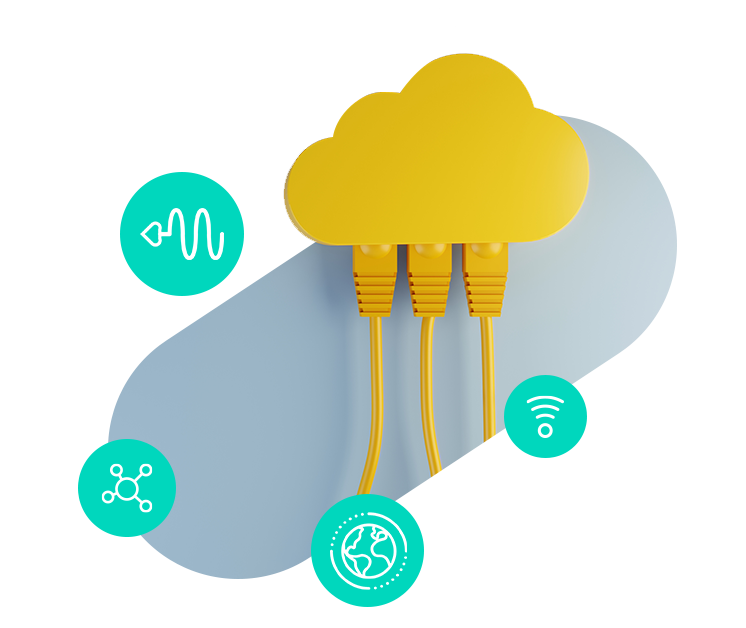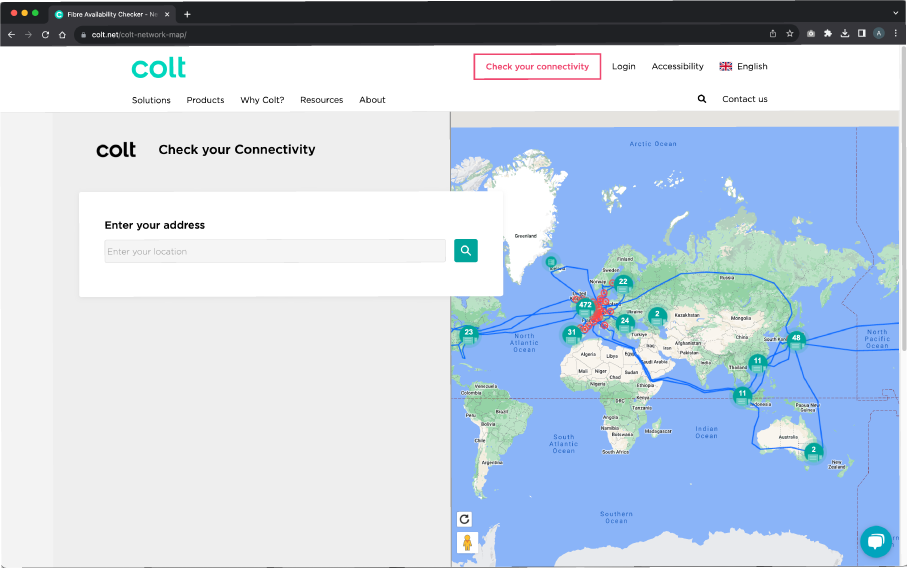Resilience
Knowledge Centre

In this guide:
Resilience
Explore topics:
Welcome guide
Registration
Buildings | Ports
Connections | Cloud
IP Access | Data centres
Delivery | Bandwidth
APIs | Pricing
Resilience | Operations
Discover more:
Introduction
On Demand circuit connections are based on unprotected circuits, which are path protected across the Colt metro packet and long distance core network with an unprotected tail between the core network PoP and the customer premises.
Circuits that are provided between key data centres are routed directly across Colt’s backbone network and are protected by default. This also applies to cloud connections where the customer port is in a key data centre.
Circuits are presented on a single interface at the A and B end locations.
Diversity is available on request.
Customers can also choose to terminate their On Demand circuit connections on ports on separate devices or at physically separate sites which often meets customers resilience/diversity requirements.
The fundamental resilience scenarios for DCNet and Ethernet On Demand services are shown below.

Connections into Microsoft Azure are based on two separate circuit connections, each provided with protection across the Colt core network and unprotected access tails. Handover into Microsoft Azure is based on highly resilient dual NNIs at a single ExpressRoute PoP, with each circuit presented on a separate NNI.
Under the On Demand offering, there are three resilience options for Azure services at the A end site:
- Two separate ports on the same NTE (minimum level of resilience)
- Two separate ports on separate NTEs, which can be located in separate rack locations
- Two separate A end sites
The first 2 scenarios are illustrated below:

The third scenario (2 separate A end buildings) is illustrated below:

Connections into Amazon Web Services are based on single circuit connection, similar to DCNet and Ethernet On Demand services.
Customers can deploy two separate circuits into two separate AWS PoPs for maximum resilience.

Connections into Google are based on a single circuit connection, provided with protection across the Colt core network and an unprotected access tail.
Under the On Demand offering, there are three resilience options for Google:
- Standard single circuit configuration
- Dual circuit configuration (99.9% Google SLA)
- 2 x dual circuit configuration (99.99% Google SLA)
The options for the dual circuit configuration (equating to Google’s 99.9% SLA) are illustrated below. Both circuits need to connect to Google Cloud PoPs in the same city (e.g. London).

Note that the VLAN attachment (“pairing key”) should be assigned to Google Cloud PoPs in different zones (e.g. one VLAN attachment assigned to zone 1, the other in zone two).
The quad circuit configuration (equating to Google’s 99.99% SLA) is achieved by duplicating the dual circuit configuration.
Coming soon!
IP Access connections are based on a single circuit connection, and are provided with protection across the Colt core network.
Similar to DCNet and Ethernet On Demand, IP Access connections are delivered via an unprotected access tail in enterprise buildings and standard data centres and via protected tails into key data centres.
This is illustrated below.

Questions? We're here to help.
Speak with one of specialists today. We’re here to offer advice, provide further information and to answer any queries you may have.

